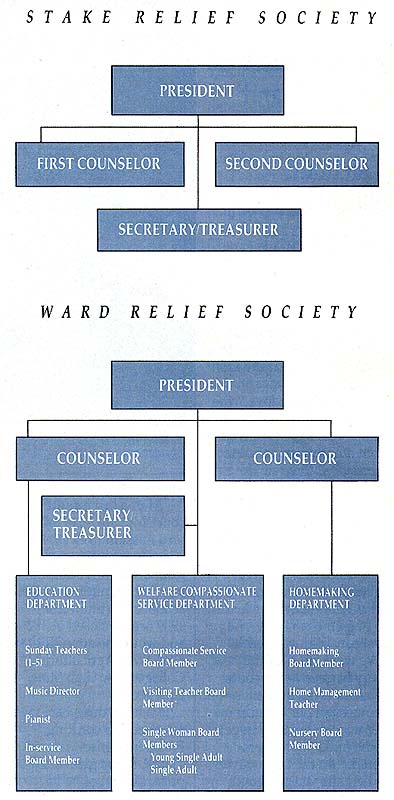“Relief Society Organization Simplified,” Ensign, Nov. 1986, 100
Relief Society Organization Simplified
Major adjustments in the Relief Society organization, to be implemented 1 January 1987, were recently announced by Acting President Howard W. Hunter of the Council of the Twelve in a letter to priesthood leaders.
Stake Relief Society boards have been eliminated. Beginning in January, only four women will be needed to staff a stake Relief Society: a president, two counselors, and a secretary-treasurer.
While this change greatly simplifies the structure of stake Relief Societies, additional women may be called to chair special events or serve certain assignments on an ad hoc basis, with prior approval of the stake president.
At the ward level, Relief Society boards will continue to function, although some board positions may be eliminated or combined. The number of women called to staff a ward Relief Society presidency and board will depend on local needs and resources. This flexibility allows the number of callings to be reduced in small wards, while in large wards, many women may be invited to serve. However, only those filling the basic board positions are considered board members.
Only stake and ward Relief Society presidencies and secretary-treasurers will attend quarterly stake leadership meetings. “This will reduce time, expense, and travel required for many of our women with assignments in Relief Society,” said Barbara W. Winder, Relief Society general president.
Information obtained at the quarterly meetings will be conveyed by those in attendance to all ward board members at the monthly ward board meeting.
The changes were made to better meet the needs of Relief Society women worldwide, according to Sister Winder. “We’re simplifying staffing and making the programs more adaptable to various countries,” she said. “In most areas of the world, it’s difficult to staff the stake board. With the added flexibility of the organization, the women of various cultures and age groups can adapt the program to their circumstances.
“The ward board is structured so it may expand or contract as needed,” Sister Winder pointed out. “In large wards, the standard Relief Society organization could be augmented by many positions, such as homemaking specialists, nursery assistants, special events chairmen, and enrichment specialists for optional midweek activities. This would give as many sisters as possible a chance to serve. Yet in very small wards or branches, the organization is designed to function with only a president—adding counselors, secretary-treasurer, and teachers and board members as needed and available.”
Single women ages eighteen to thirty may meet with the regular Relief Society or in their own Relief Society meetings and activities that are part of the ward Relief Society. They meet with the regular Relief Society at least monthly.
Further information about these changes may be found in the new Relief Society Guide for Priesthood Leaders (PBCT1400) and in the forthcoming (1987) revision of the Relief Society Handbook.

Stake and Ward Relief Society